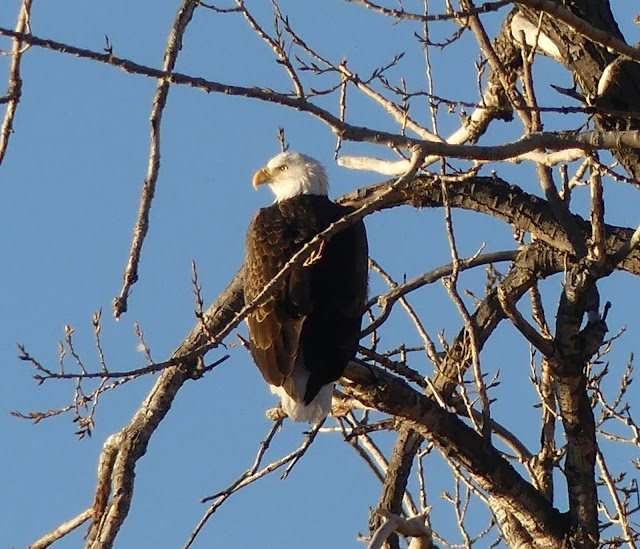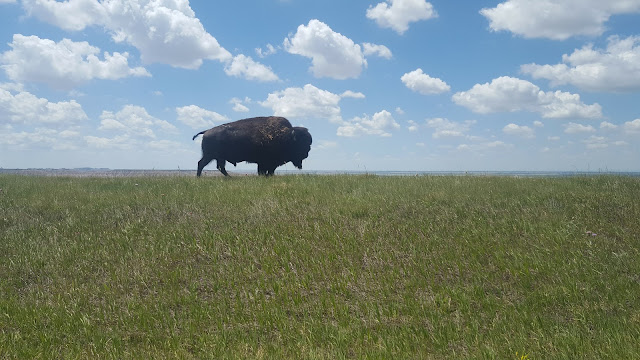Early morning eagles.

I am learning that one of the things you do as a photographer is chase the light, particularly the golden hours around sunrise and sunset. I know a man who specializes in photographing sunrises. He regularly gets up at or before 4 am to check the weather, make coffee and decide if it's worth a drive to the spots that he knows will yield stunning sunrise photos . I am not there yet, particularly with that getting up before 4 am business. However, I did find myself getting up and out before 7:30 am on a Sunday morning to take pictures of eagles. I feel that this is sort of the same thing. Finding eagles is easy around here as eagles overwinter by the Oahe Dam about six miles out of town, attracted by the open water and cottonwood trees. Eagles are large, photogenic birds that unlike their smaller cousins don't flit. Generally if you are quiet and still they will be as well until something calls them to take flight. In populated areas they move if there is too much human






















